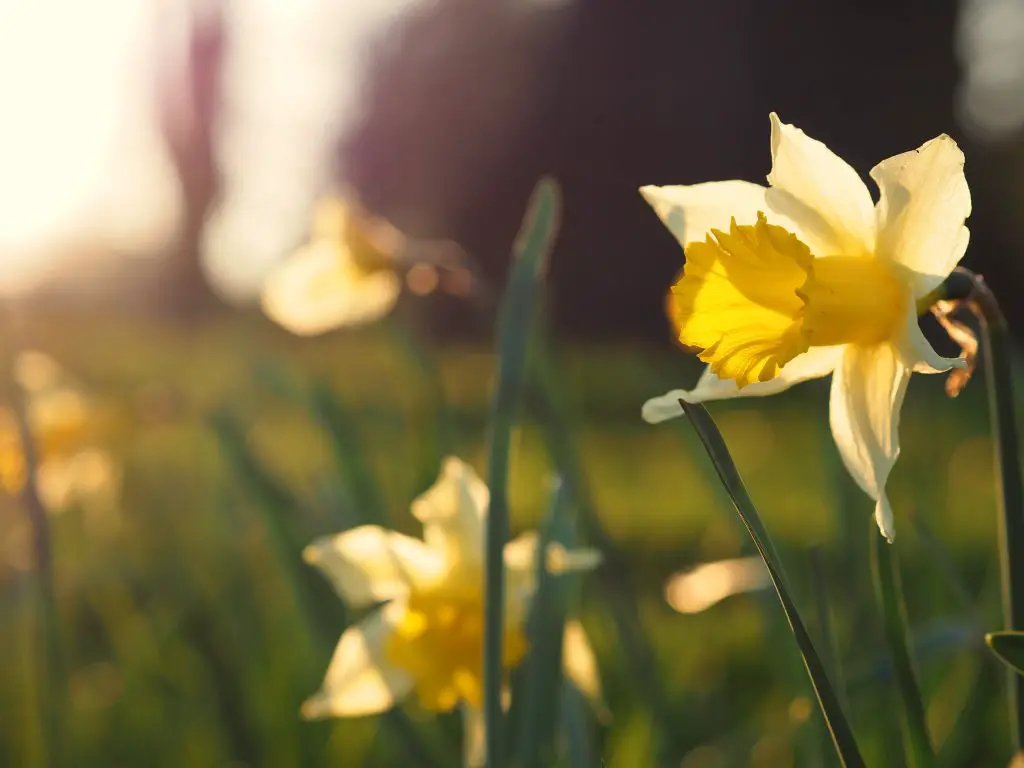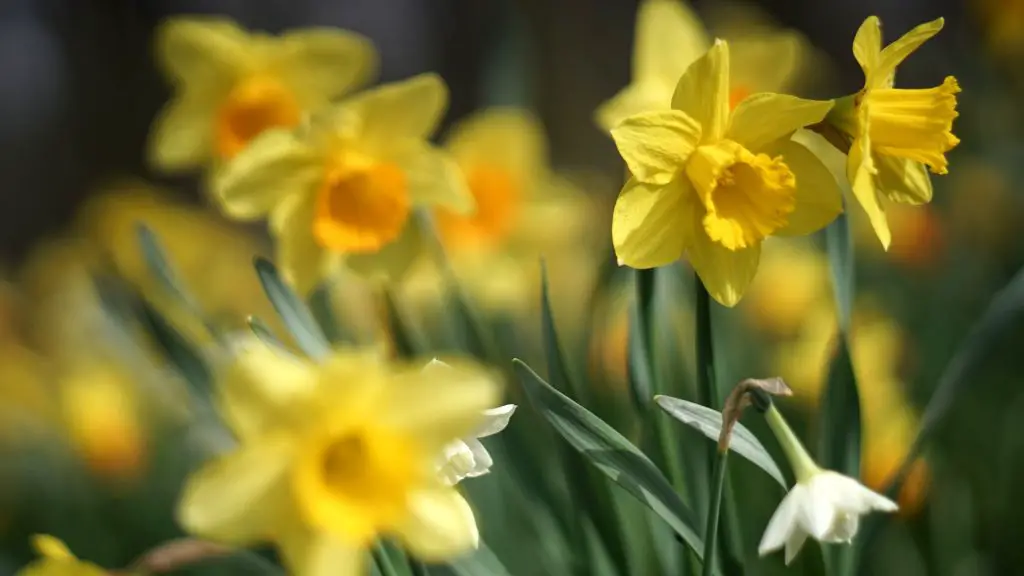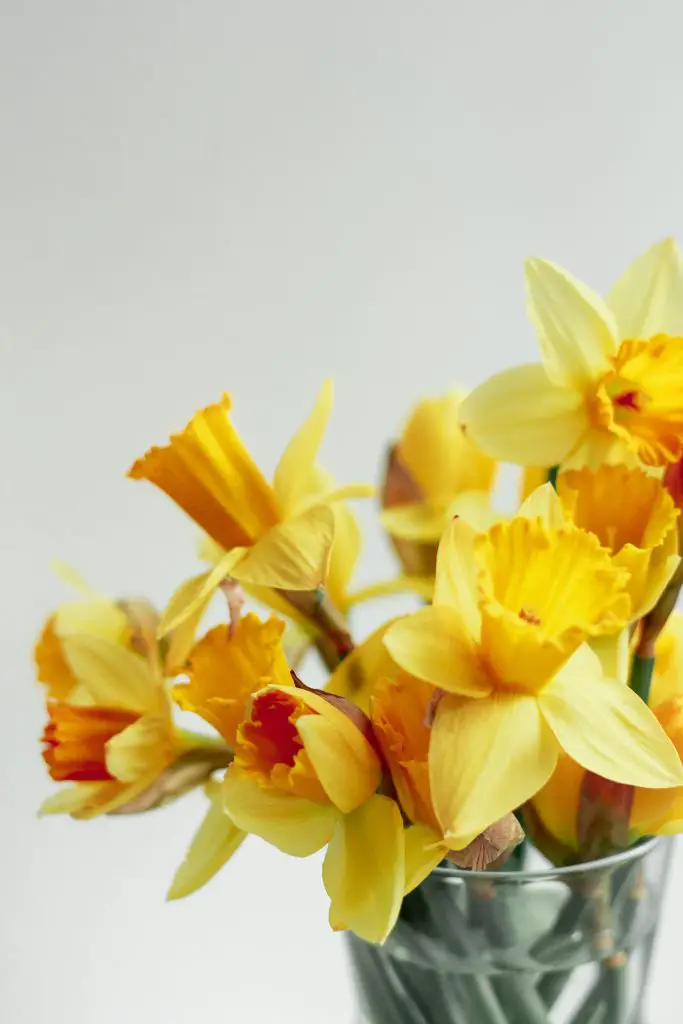Is It Too Late To Plant Daffodils? Daffodils are one of the most popular spring-flowering bulbs available in the garden. They add a splash of color in early spring when things are usually still quite cold and dreary. To get the plants to flower most people plant them in mid to late autumn, however, if you’ve missed that window you may be wondering is it too late to plant daffodils?
To get a daffodil to flower in spring the latest you can plant them in midwinter which in the northern hemisphere is around December. However, if you live in a region where you have extremely cold winters and the ground freezer solid it may be a much better option to place them into pots at this point in time rather than try them plant them into the ground as it will be near impossible to dig a hole.
How Long Do Daffodils Last If They Are Not Planted?
Daffodil bulbs, and also other bulbs for that matter, will not last, and indefinitely like seeds and therefore need to be planted within around 12 months of their purchase. But during the period in which they are being stored without being planted, they must remain in a cold location that is less than 41°F (5°C) and is also dry.
The reason for this is that spring-flowering bulbs which include daffodils require a period of cold in which to flower, if the area where you store them gets a little bit too warm the bulbs can be tricked into thinking that it is spring and will start to attempt to flower.

Additionally, the other problem with storing bulbs is that they can readily go moldy or rot so they need to be checked regularly to avoid any chances of problems during a period of storage.
How Do You Tell The Daffodils Are Still Ok To Plant?
There are a couple of different methods that can be used to double-check that the bulbs are still in good condition. When you come to plant the first thing to do is to check for any signs of mold which is an indication that the bulbs are starting to deteriorate.
The second way to test if the bulbs are ok is to actually pick one of them up and squeeze them, if they are squishy in any way that is an indication that they are beginning to rot from the inside.
However, you may have cases where there is dry rot is happening, if this starts to occur the bulbs will feel light, to test this you can put the bulbs into water. If they float then we can assume that the daffodil bulb has rotted from inside.
To make 100% sure you can also slice the bulbs in half vertically and inspect them. The reason that you cut them vertically rather than horizontally is that it means that you will still be able to plant the bulbs because if you cut them vertically each bulb will have a section of the things that they need to survive in the ground.

How To Plant Daffodil Bulbs
Daffodil bulbs are relatively easy to plant and as mentioned earlier and are ideally planted between mid to late autumn, or even early winter. It is important to note that you cannot plant newly purchased bulbs too early as this may result in the flowering too early.
The reason that this can sometimes happen is that commercial producers of bulbs sometimes store them for many months in cold conditions to stop them from flowering and ensure that their ready to be planted as soon as you consumer receive them. However, if you plant too early when the weather is still relatively warm it can trick the bulb into thinking that spring has arrived.
When planning the bulbs they should ideally with placed at a depth of approximately 3 to 4 inches. In terms of location daffodil bulbs ideally prefer a sunny location that has rich, moist, and free-draining soil with plenty of nutrients. If you are unsure about the quality of your soil it is always advisable to add an extra bag of compost to the soil as it won’t hurt.
The other common piece of advice that is given by people like Monty Don of gardeners world, if you want a natural appearance with bulbs is to simply toss them on the ground in the area where you intend to plant them and plant them where they land. This provides a random arrangement of bulbs which is much more typical of what happens in nature.

If you are planting into a garden bed it is also advisable to mulch the garden to avoid the loss of moisture and if you’re anything like me and sometimes forget where you placed the bulbs in the garden it’s also a good idea to put a stake in to signify their location to avoid planning anything else on top of them accidentally.
How To Look After Daffodils Once They Are Planted
Once they are in the ground there is very little that needs to be done other than to wait for the plants to flower. Typically, you will see the daffodils begin to produce foliage in late winter or early spring which is quickly followed by the production of the flower heads.
Once the flower heads begin to fade is important to deadhead the plants by removing only the flower heads. This is beneficial for the plant because it allows it to concentrate on pushing energy back down into the bulb for the following season. If the flower heads are not removed the bulbs will sometimes concentrate on producing seeds which can affect the quality of the flowering the following year.
The key thing at this stage of the season is to ensure that you leave the foliage intact to allow photosynthesis to continue which will result in additional sugars being pushed back down in the bulb. However, once the foliage begins to brown there is little benefit in keeping it on the plant and it can be removed at this point time.

If you live in a location that has mild winters, typically in zone 9 or 10, you may need to dig up the bulbs and store them in the fridge as they need a period of cold in order to flower properly the following year.
I hope you’ve found this article useful and have great success growing your daffodils at home in your garden even if you planted them a bit late this year, if you have any additional comments or questions please leave them in the section below.
Relevant Articles
How To Tell When Daffodils Are Ready To Harvest?
Are Daffodils Edible? Are They Safe To Eat?
What Is The Difference Between Daffodils And Buttercups? Are They The Same Thing?
